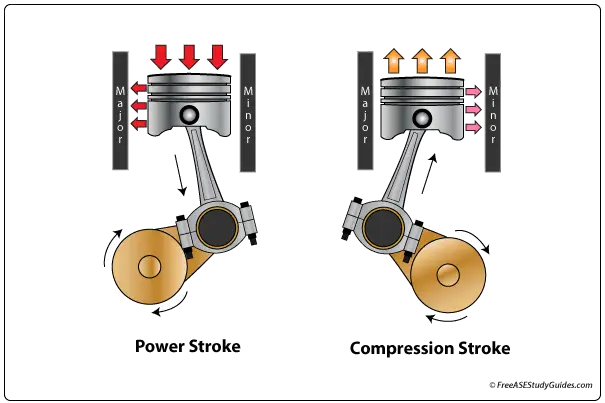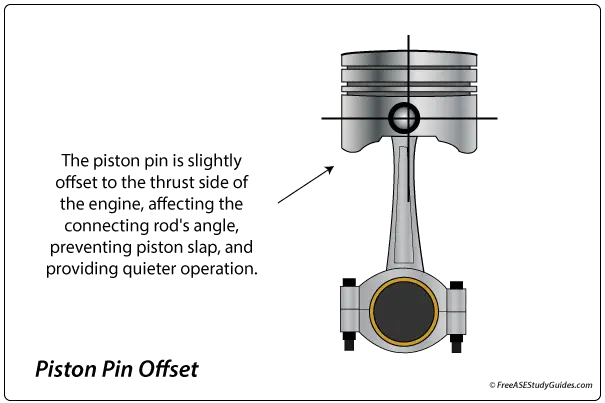Piston Side Thrust

During the power stroke, the force of combustion on the piston's dome and the connecting rod angle force the piston's thrust side against the cylinder wall. As a result, this cylinder area takes more wear than the other areas; the piston's thrust side affects the engine's thrust side.
Major Thrust Side

The major thrust side of the piston is forced against the wall on the power stroke. This site takes the most abuse and is widely considered the thrust side of the piston. The other side, the minor thrust side, experiences force during the combustion stroke, but with much less pressure.
Slipper Pistons

Because this is considered a high-friction area, manufacturers install lighter slipper pistons with low-friction coatings to increase performance. In addition, they can be symmetrical or asymmetrical. The skirts of a symmetrical piston are equal on both sides.
The skirt on the thrust side of an asymmetrical piston is wider and has more support. The minor thrust side of the piston supports the piston during the combustion stroke. Reducing the weight of the piston provides for more efficient higher revving engines.
Piston Pin Offset

Piston pin offset pushes the major thrust side tighter against the wall, affecting the connecting rod's angle, reducing piston slap, and providing efficient, quieter engine performance.